10 innovative tips to gamify your sales strategy
Gamification of sales is not a new concept. However, with more software providers developing applications that can automate and streamline gamification of sales in the workplace, the process is many times easier than before. But what is gamification of sales? Why is it important to gamify your process? Below we’ll dig into tips to master the art of sales gamification, but first, we’ll cover some basics.
What is sales gamification and why does it matter?
Gamification of sales involves setting up challenges and sending your reps out to compete against one another for the top spot on the leaderboard. Challenges can be as simple or creative as you want. You can rate reps’ performance in areas like individual reps’ results, deals won, calls made, revenue generated, and a lot more.
The element of competition is one of the best motivators for salespeople, and people in general. To be sure, there is a scientific explanation for why gamification is effective. When we accomplish something, and receive a reward for it, our brain produces endorphins. And those endorphins produce excitement, which boosts motivation and the desire to continue playing so that we can continue to experience that rush.
What does that mean? In short, when your sales reps are rewarded, via gamification, they will want to do more to be rewarded again. And in turn, the more they are “playing” the game of sales, the more you will see deals closed and revenue growth.
Tips to gamify your sales strategy
Now that we’ve done some housekeeping, let’s dig into some tips you can use to effectively gamify your sales strategy.
1. Put the right technology in place
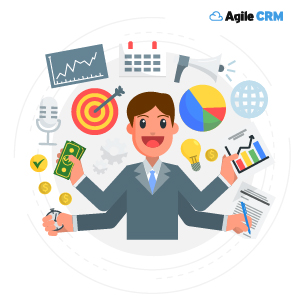
To truly excel at sales gamification, it’s essential to have a sales automation system in place that can streamline the whole process. This normally comes as part of a customer relationship management (CRM) system.
However, there are very few CRM vendors in the market that provide gamification features. Because Agile CRM is an end-to-end solution with complete sales, marketing, and customer support automation, it naturally includes features to gamify your sales process.
Two overarching challenges that sales managers face these days are: 1) finding ways to increase sales and boost revenue, and 2) encouraging sales reps to adopt—and actually use—a CRM solution. According to Gartner, 70% of business transformation efforts fail due to lack of engagement. It’s tough to get reps to adopt new technology. Gamification increases adoption rates considerably. Select the right system, and you’ll not only increase sales through gamification but also boost adoption and usage of your CRM.
2. Identify key metrics to track

Once you have your CRM in place and gamification process set up, you should define which metrics you want to track against your gamification goals. Which metrics drive the most sales for your company? Calls made? Appointments booked? Consider what drives your business and incorporate those metrics into the challenges you create for your team.
In this way, you work backward from your desired end goals and plan your gamification program in a way that lets you achieve those goals. This is a critical part of successfully improving sales performance.
3. Leverage a leaderboard to boost competition
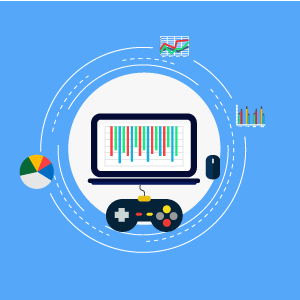
Gamification software includes a leaderboard where reps can see how they are performing against one another. When you glance at the leaderboard, you see who is performing well. The drive to succeed will push reps to work harder, and when they do accomplish their goals, the system congratulates them.
Plus, when you gamify sales, your reps check in each day on the leaderboard. There, they see their colleagues as well, which will make them feel more connected. This helps new reps become part of “the team” very quickly and minimizes feelings of isolation often experienced by new employees. Once that isolated sales rep wins their first competition, other reps will reach out to congratulate them, and they will feel more like part of a team, and less like a loner.
4. Provide valuable incentives worth competing for
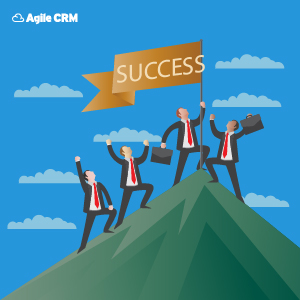
The first idea that pops into your head will likely be to incorporate monetary incentives. And that’s always a good idea when you gamify sales. Nothing motivates reps like making more dollar bills. But, you can also include non-monetary incentives, such as:
- Paid days off
- Free trips
- An invitation to have dinner with the CEO
- Free lunch for a week
- Recognized as the sales rep of the month or week
- Badges for completing certain challenges
Motivation is linked directly to productivity. The most effective method for improving performance is through sales incentive programs. And when you gamify sales and include incentives for winning, you put in place just the right variable to drive that motivation.
5. Use it as an opportunity to improve sales data integrity

If your reps are not fully leveraging your CRM and adhering to high standards of data maintenance, your data integrity will start to decline. Tending to the data around every prospect that your reps interact with does take a little time, which is why adoption levels of CRM software are so low among salespeople. They would rather be closing deals than spending time entering details about sales calls. This is where gamification comes to the rescue.
When you reward reps for keeping their records clean, they are more likely to do it. Plus, the cleaner and more accurate the data is, the easier it will be for them to quickly find their hottest leads. This will, in turn, lead to them closing more deals.
Once they see that their work in the CRM is leading to more closed deals, they will start to understand the entire puzzle and see the forest for the trees. Simply telling them that will help won’t generate results, but helping them see the impact for themselves will certainly increase adoption, which will result in better data and a cleaner pipeline.
6. Drive motivation through positive reinforcement
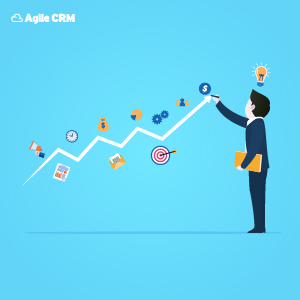
You might be surprised by how many sales managers and directors do not stop by to congratulate reps on a job well done. Receiving positive reinforcement motivates people in very productive ways. Nothing kills employee morale more than working hard and feeling like no one is taking notice.
When you gamify sales, this problem is more easily solved. With gamification, that positive reinforcement is baked into the software itself.
You don’t need to wait until someone wins a challenge to congratulate them either. You can set smaller, inter-challenge milestones for each rep and congratulate them when they when they hit each one of those. Managers can simply stop by to give the rep a pat on the back and some positive reinforcement, which goes a long way in the world of sales
7. Use gamification to mentor new employees

It’s quite common to be slightly introverted towards one’s superiors in the workplace. This is particularly true for new employees. In general, those that work in sales are more extroverted by nature. But still, this holds true, even in sales.
You might not be bothered by conversing casually, in passing, with more senior colleagues. But you are probably not going to ask them for help when you encounter an issue you need advice on. You’d rather solve it on your own to prove yourself. However, this changes slightly when you gamify your sales process.
Because gamification is, by nature, collaborative, new employees will feel less restricted in reaching out to more senior colleagues for advice on best practices, or helpful tips and tricks. When winning the prize is on the line, all bets are off, and we’ll often do what it takes to win. And that includes reaching out for assistance, which allows seasoned salespeople to mentor newer ones through the sharing of best practices.
8. Improve your sales forecasting
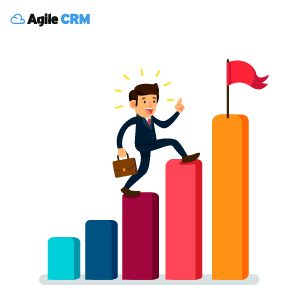
As mentioned above, when you gamify sales, you maintain cleaner data. The cleaner your data is, and the more accurate your sales pipeline is, the greater your capacity will be to accurately forecast future sales. When you have access to CRM metrics and reporting and can forecast future sales with more accuracy, it becomes much easier to finely-tune the objectives you set for your reps. Then, you can more easily determine where to allocate resources to aid in achieving those objectives.
Plus, seeing an accurate forecast can motivate a rep to work harder, either because a high forecast whets their appetite for a strong month of commission, or a weak forecast motivates them to work harder to beat predictions. Simply put, when you gamify your sales process, you will be able to make better data-driven decisions about your future sales strategy.
9. Unite your employees around common goals
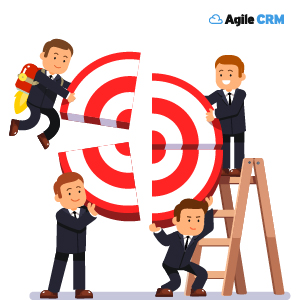
Because so many sales reps work remotely and travel alone to meet with prospects, they can often feel a sense of isolation. As they say, no man is an island, and that applies to salespeople just like everyone else.
When you introduce gamification to your sales team, it immediately connects those employees in new ways. They will start to collaborate more, interact more, and start to coalesce around the common goals that you set in your gamification program. You can even create group challenges that reward the entire team when milestones are met. This creates a comradery that is essential for a healthy, well-oiled sales machine.
10. Constantly assess and reevaluate
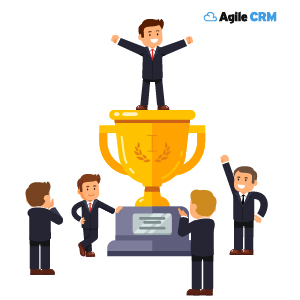
If you kick off your program with a set of sales gamification ideas and strategies, you might find that what you thought would work isn’t producing the results you expected. This is an opportunity to go back to the drawing board and ask yourself why reps are not winning their challenges.
Evaluation becomes easier the longer you use gamification because more data is stored over time. Once reps start to ramp up their usage of your CRM, you will start to see much more data around what each one of them is doing with their time. If someone is falling short of expectations, not only will you see it on the leaderboard, but it will also be reflected in activity reports that you can run for individual reps.
You will know when someone is not completing tasks on time. On the other hand, you will also know when someone is overperforming and deserves a raise or other types of congratulations or compensation. You’ll be able to use the data in the CRM to identify where bottlenecks are forming so you can address them and keep your team operating at a high level.
A transparent business has a greater potential to be profitable over the long term. Gamification software leads to higher adoption rates of CRM software. This, in turn, provides maximum transparency into individual reps as well as overall sales performance.
Key Takeaways
Sales gamification has the potential to catapult your team to the next level of efficiency and effectiveness. The key is encouraging adoption of your CRM so they will actually use it. Gamification, in a sense, forces them to adopt CRM technology, because they have to use it to compete with their peers.
Once you have your gamification process in place and start running challenges, you’ll see loads of benefits start to appear. In addition to the obvious—more deals closed and revenue growth—you’ll also see benefits like:
- Better data and a cleaner pipeline
- More connected employees
- Improved collaboration
- Rapid mentoring of new employees
- Increased efficiency
- Better sales forecasting
- Higher levels of motivation and engagement
- Increased transparency
53% of technology stakeholders say that by 2020, the use of gamification will be widespread. Although that doesn’t sound like a lot, it’s the majority. The use of sales gamification software is going to continue to grow in popularity because of the benefits listed above. It’s highly innovative and can help elevate your sales efforts from average to spectacular. The key is in finding the right tool for the job and following the tips above. Do that, and you’ll start enjoying those benefits sooner than you think.
Are you using gamification for sales? Do you have any tips to share that have led you to be more successful? Share them with us in the comments section below!

No Comments